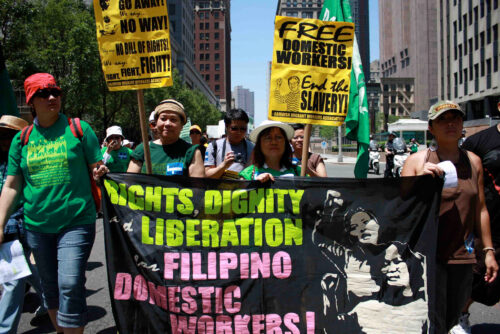Growing Inequality as Part of the Advanced Economy
There are three processes of economic and spatial organization I see as central to addressing the question of inequality. One is the expansion of the producer services and corporate headquarters sector, and their consolidation into the economic core of major cities. While this sector may not account for the majority of jobs, it establishes a new regime of economic activity and the associated spatial and social transformations evident in major cities.
A second process is the downgrading of the manufacturing sector, a notion I use to describe a mode of political and technical reorganization of manufacturing, which should be distinguished from the decline and obsolescence of manufacturing activities. The downgraded manufacturing sector represents a mode of incorporation into the ‘post-industrial’ economy rather than a form of obsolescence. Downgrading is an adaptation to a situation where a growing number of manufacturing firms are competing with cheap imports, and, secondly, the profit-making capacities of manufacturing overall are modest compared with those of leading sectors such as telecommunications or finance and their sister industries.
The third process is the informalization of a growing array of economic activities, which encompasses certain components of the downgraded manufacturing sector. Like the latter, informalization represents a mode of reorganizing the production and distribution of goods and services under conditions where a significant number of firms have an effective local demand for their goods and services, but cannot compete with cheap imports. They also can’t compete for space and other business needs with the new high-profit firms that are engendered by the advanced corporate service economy. Escaping the regulatory apparatus of the formal economy, even if partially, enhances the economic opportunities of such firms.
These diverse trends come together particularly strongly in cities. The table below shows the staggering poverty rates in our most successful cities, and how that is tied to race/ethnicity.

The following table gives us a larger perspective on how the upper 10 percent of income earners have an extremely high share of all national income: up to 45% in the ‘prosperous’ decades that began in the mid 1980s.2

*Income is defined as market income but excludes capital gains.
- Brookings Institute, “Living Cities Census Series,” May 2008. [↩]
- For a more extensive discussion, see Sassen (2008), “Two Stops in Today’s New Global Geographies: Shaping Novel Labor Supplies and Employment Regimes,” American Behavioral Scientist, vol.52, issue 3, pp. 457-496. [↩]
- Lawrence Mishel, “Who’s Grabbing All the New Pie?” Economic Policy Institute: Economic Snapshots, 1 August 2007. [↩]




